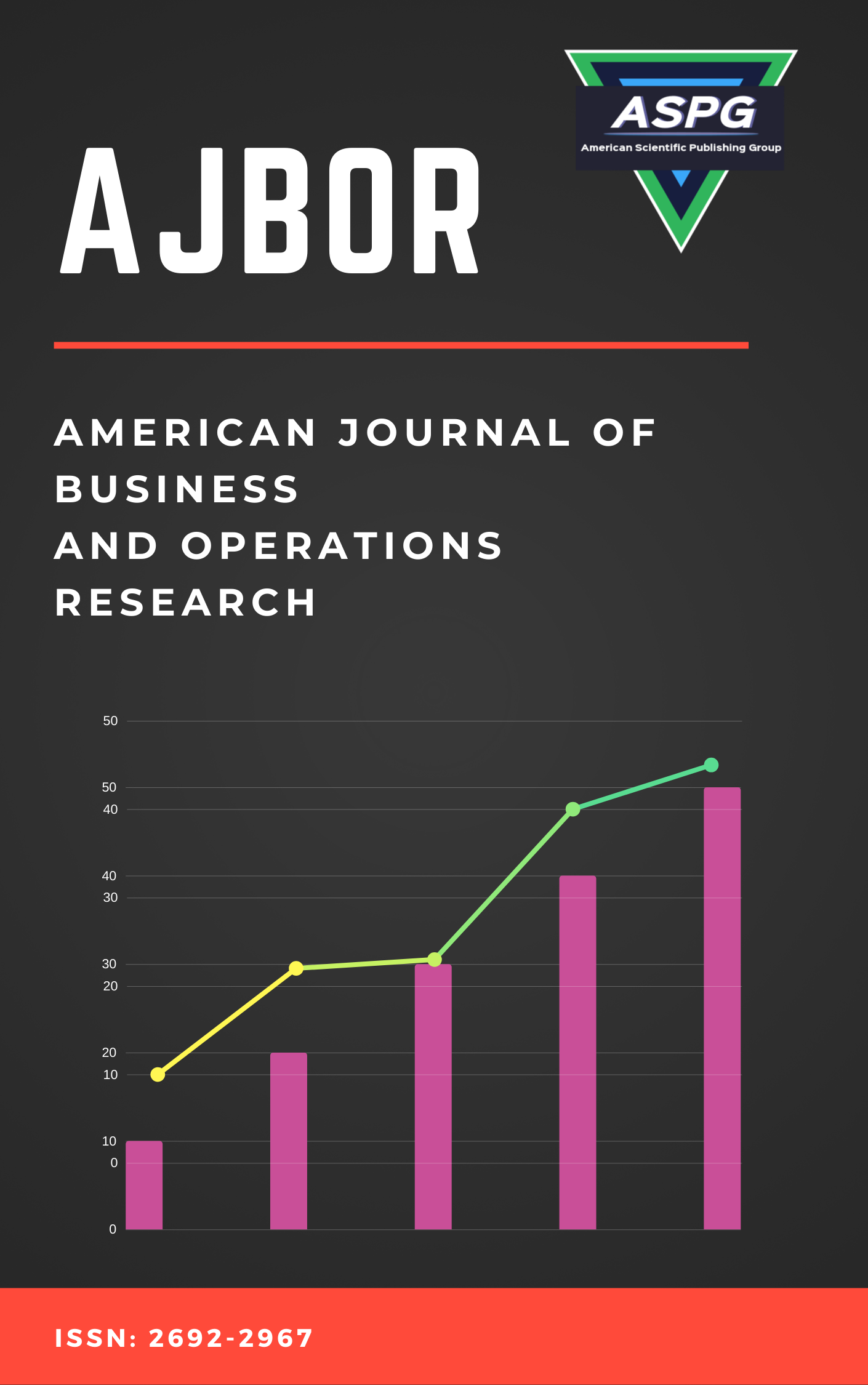

Volume 8 , Issue 2 , PP: 25-35, 2023 | Cite this article as | XML | Html | PDF | Full Length Article
Basant Sameh 1 , Mahmoud Elshabrawy 2 *
Doi: https://doi.org/10.54216/AJBOR.080203
This study investigates the application of time series models, specifically ARIMA (Auto Regressive Integrated Moving Average) and SARIMAX (Seasonal Autoregressive Integrated Moving Average with eXogenous regressors), in the context of climate change. The ARIMA and SARIMAX models are mathematical methods that can be used to forecast future values of a time series related to climate change, taking into account trends and seasonality, as well as incorporating additional information through exogenous variables. The paper also delves into the mathematical foundations of the ARIMA and SARIMAX models, including the various operators used to eliminate trends, the use of lag polynomials to represent the autoregressive and moving average components of the model, and the incorporation of exogenous variables in the SARIMAX model. The study aims to provide a better understanding of the use of these models in analyzing and predicting the effects of climate change.
Forecasting , Time Series , ARIMA , SARIMAX , Climate Change
[1] Federico, C., Massimiliano B., Wind speed and wind energy forecast through Kalman filtering of Numerical Weather Prediction model output. Appl. Energy, 99, 154-166, 2012.
[2] Wang H, Huang J., Zhou H., Zhao L., Yuan Y., An integrated variational mode decomposition and ARIMA model to forecast air temperature. Sustainability, 11(15), 2019.
[3] Kisi, O., Cimen M., Precipitation forecasting by using wavelet-support vector machine conjunction model. Eng. Appl. Artif. Intell., 25, 783-792, 2012.
[4] Radhika Y., Shashi M., Atmospheric temperature prediction using support vector machines. Int. J. Comput. Theory Eng. , 1(1), 55-58,2009.
[5] Venkadesh S., Hoogenboom G., Potter W., McClendon R., A genetic algorithm to refine input data selection for air temperature prediction using artificial neural networks. Appl. Soft Comput., 13, 2253-2260, 2013.
[6] H. Nasser AlEisa, E. M. El-kenawy, A. Ali Alhussan, M. Saber, A. A. Abdelhamid et al., Transfer learning for chest x-rays diagnosis using dipper throated algorithm. Computers, Materials & Continua, 73(2), 2371–2387, 2022.
[7] Abdelhamid AA, El-Kenawy E-SM, Khodadadi N, Mirjalili S, Khafaga DS, Alharbi AH, Ibrahim A, Eid MM, Saber M., Classification of Monkeypox Images Based on Transfer Learning and the Al-Biruni Earth Radius Optimization Algorithm. Mathematics, 10(19):3614, 2022.
[8] Mohamed Saber, A novel design and Implementation of FBMC transceiver for low power applications, IJEEI, 8(1), 83-93, 2020.
[9] Qiao B., Wu Z., Tang Z., Wu G., Sea surface temperature prediction approach based on 3D CNN and LSTM with attention mechanism. In Proceedings of the 2022 24 th International Conference on Advanced Communication Technology (ICACT), PyeongChang Kwangwoon_Do, Republic of Korea, 342-347, 13–16 February 2022.
[10] Jeong S., Park I., Kim H., Song C., Kim H., Temperature prediction based on bidirectional long short-term memory and convolutional neural network combining observed and numerical forecast data. Sensors, 21, 2021.
[11] Cao X., Zhong Y., Zhou Y., Wang J., Zhu C., Zhang W., Interactive temporal recurrent convolution network for traffic prediction in data centers. IEEE Access, 6, 5276–5289, 2017.
[12] Zhao L., Song Y., Zhang C., Liu Y., Wang P., Lin T., Deng M., Li H., T-gcn: A temporal graph convolutional network for traffic prediction. IEEE Trans. Intell. Transp. Syst., 21, 3848–3858, 2019.
[13] Liang S., Wang D., Wu J., Wang R., Wang R., Method of Bidirectional LSTM Modelling for the Atmospheric Temperature. Intell. Autom. Soft Comput., 30, 701–714, 2021.